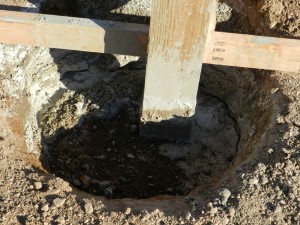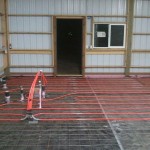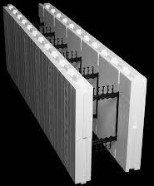FootingPad™ Composite Footing System
In the late 1980’s I was a member of the Board of Directors for the National Frame Building Association (NFBA). Serving along with me was Glen George.
The recent 2014 National Frame Building Expo held in Nashville, TN, was like old home week for me, as I reunited with several people I hadn’t had a chance to talk with in years. One of these was Glen.
My loyal readers have read me rant on about concrete cookies attempting to be used as footing pads for columns in pole buildings. For those who have missed the fun, here is a chance to catch up:
https://www.hansenpolebuildings.com/blog/2012/08/hurl-yourconcrete-cookies/
https://www.hansenpolebuildings.com/blog/2014/03/concrete-cookies/
Welcome back.
I have always respected Glen as being a pretty sharp person. In this case, I was not at all disappointed, as Glen and his team have seen a need and developed an alternative to the infamous concrete cookie.
They have developed a composite footing system which is engineered to provide the fastest and most economical method to support the structural building columns for many pole buildings.
FootingPads have been designed and engineered to replace concrete footings of equal diameter. They have been thoroughly tested and certified by NTA Testing Laboratories and carry the ICC-ES Evaluation Services approval (ESR-2147). (Read more about ESR numbers at: https://www.hansenpolebuildings.com/blog/2012/01/icc-es/)
 FootingPads are available in both 16 and 24 inch diameters. They won’t crack like concrete and no extra or special equipment is required.
FootingPads are available in both 16 and 24 inch diameters. They won’t crack like concrete and no extra or special equipment is required.
The one downside is currently mechanical fasteners cannot be used to attach FootingPads to the bottom of a column, which prevents them from being used to prevent column uplift. This requires the RDP (Registered Design Professional – Architect or Engineer) to design an alternative means for resisting uplift forces. Considering most providers who specify concrete cookies appear to entirely ignore uplift – most anything would be an improvement.
In today’s world of “green building” the FootingPad composite footing system makes the most sense in minimizing environmental footprints, while maximizing structural integrity. Each FootingPad is manufactured from 100% recycled composite materials. From manufacturing to transport and installation, every FootingPad is completely eco-friendly!










Why do you have such a bias against concrete cookies? What is the difference between a 16″ concrete cookie and a 16″ composite FootingPad? Do they not both transfer the weight bearing on the column across the same 16″ of soil? Why then do you consider the one worthless and the other the one and only alternative to poured in place footings?
Thanks.
Chris ~ First, thank you very much for being a reader of this blog. I appreciate builders who are willing to step up and be contributors – who will ask questions and challenge ideas. Being open minded will place you far ahead of your competition.
I have no issues at all with precast concrete cookies provided they meet the requirements of the Code (minimum six inch thickness) and provide a surface area large enough to distribute the imposed live and dead loads. Regardless of whether a concrete cookie or a FootingPad, 16 inches in diameter is still only 1.4 square feet, so it isn’t going to be adequate for most cases, unless the imposed load is very small, or the soil is very stiff (I wouldn’t suggest using a soil bearing pressure of over 2000 psf, unless a soils test has been done).
Hi
Thanks for your reply. Another question about the FootingPad: can we assume that the FootingPad is at least equivilant in strength to a 6″ thick cookie? Would a 24″ FootingPad be as good as or better than a 6″ x 24″ cookie?
Thanks!